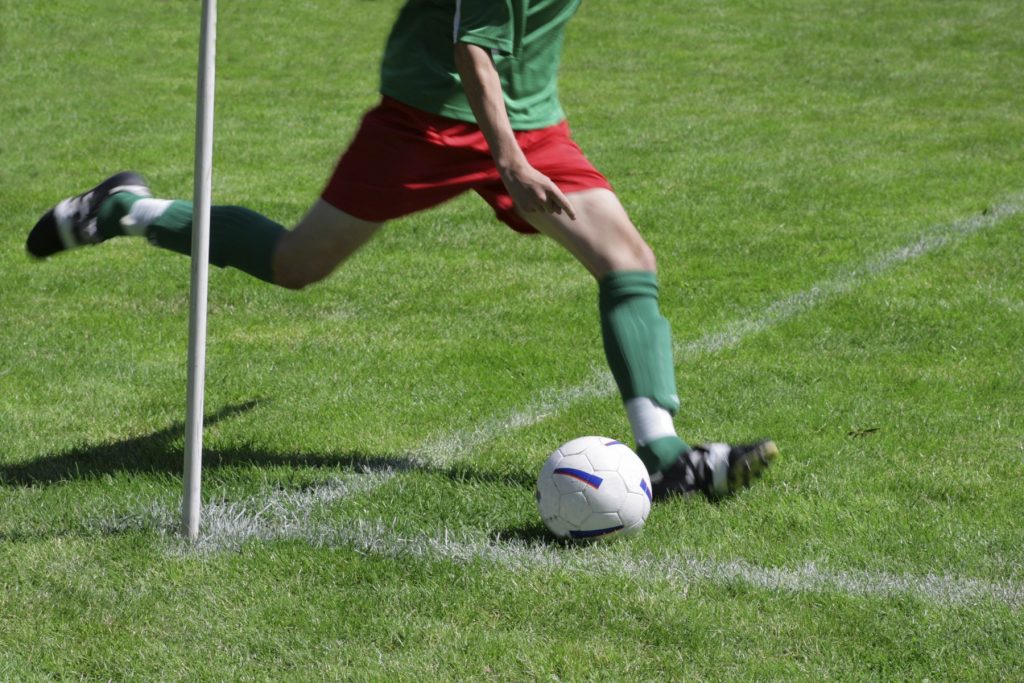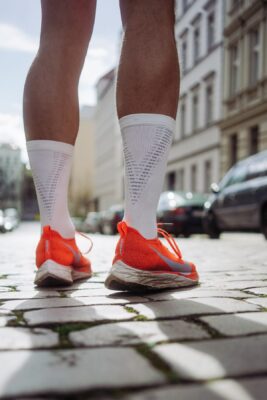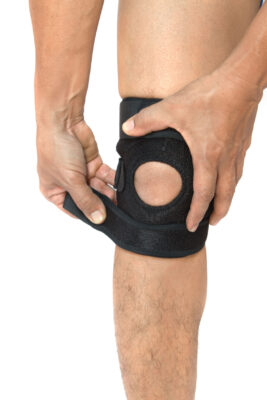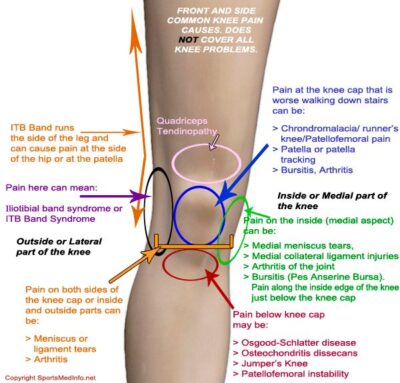Knee Pain – Burning and Stabbing Pain on Inside of Knee
By Mr. Sam Rajaratnam FRCS (Tr. & Ortho)
Knee pain can be amongst the most troublesome of conditions and cause considerable inconvenience to leading a normal life even though the patient is otherwise in good health.If there is not an obvious cause of injury the pain inside the knee can have a number of causes depending on the type of pain, its severity, location and frequency.
Anatomy of the knee
The knee joins the large thigh bone (femur) to the lower leg bones (tibia and fibula), and the joint is protected at the front by the kneecap (patella). Tendons connect the knee bones to the muscles which allow the knee to move, and ligaments hold the knee assemblage in place. Two pieces of cartilage (menisci), one on the inside (medial) and one on the outside (lateral) of the knee act as shock absorbers between the femur and tibia, and a number of fluid-filled sacs (bursae) help with movement.
Investigation of pain inside the knee
Your doctor will ask you about the type of pain you are feeling, and also note the size of your affected knee compared to your unaffected knee. Any discolouration and warmth will be noted as will the range of movement you are able to effect. The doctor may need further investigation in the form of medical ‘imaging’ (x -ray, MRI scan, ultrasound) to detect fluid or a possible fracture, and perhaps a blood test to identify any rheumatoid factor or antinuclear antibodies. Fluid may also be drawn from the knee to test for uric acid or bacteria if an infection or inflammation is suspected.
Pain
Pain is a subjective phenomenon therefore it is important to be able to describe the type of pain you are feeling as accurately as possible because it will give the doctor an indication of the source of the problem.
Pain occurs when special nerves, called nociceptors, detect tissue damage.
Pain is the body’s normal response to an injury, designed to inhibit movement in order to prevent further tissue damage.
Pain can be described as slight or severe, a burning pain, an ache or a stabbing pain. It can be continuous or intermittent and get worse when the joint is used. These are all indicators which will help the doctor in the diagnosis.
Possible causes of a burning or stabbing knee pain
Some knee pain is due to overstretching or excessive strain put on the ligaments and tendons of the knee, possibly by sporting exercise such as athletics or cycling. The ligaments and tendons can become overstressed, irritated and inflamed causing pain. A very common cause of this type of pain is a tear in the meniscal cartilage or surface cartilage of the knee.
Pain at the front of the knee
-
Excessive stress on the patella tendon at the front of the knee, just below the patella, manifests itself by a burning sensation at the front of the knee (tendonitis).
-
A severe stabbing pain and swelling at the front of the knee may be due to a partially dislocated patella. The patella normally slides in a groove at the front of the femur, but can slip out due to a sudden twist or impact.
-
Chondromalacia patellae is a condition due to the cartilage on the under surface of the patella softening and deteriorating. The symptoms are a grating feeling at the junction of the patella and femur. Sometimes an unstable flap of surface cartilage may cause this pain, and may be curable with simple keyhole surgery and a chondroplasty.
-
Repetitive knee movements can result in an accumulation of fluid in the bursae resulting in pain and a swelling at the front of the knee (housemaids knee).
Pain at the back of the knee
-
A sharp stabbing pain at the back of the knee can commonly be due to hamstring tendonitis, caused by inflammation of the tendons connecting the hamstring to the knee. A common cause is overuse, and the pain becomes more apparent with continued use.
-
A swelling and tightness behind the knee might be due to inflammation of the popliteal bursa (baker’s cyst). This is often due to there being another mechanical abnormality within the knee producing excess fluid.
-
Pain at the back of the knee may also be due to a tear in the posterior part of the meniscus.
Pain on the outside of the knee
-
A burning pain at the outside (lateral side) of the knee may be due to iliotibial band syndrome. The iliotibial band is a ligament running down the outside of the thigh to the outside of the knee which can become inflamed and irritated.
-
A tear in one of the two menisci can cause pain, swelling, and a feeling that the knee is giving way or locking.
-
A burning sensation at the side of the knee can indicate pressure on the menisci and sometimes can be due to a fluid filled cyst.
Pain on the inside of the knee
- Pain on the inside (median side) of the knee may be due to the tissue fold (medial plica) becoming irritated by injury or overuse. This is very common and much under-diagnosed, as it can’t always be seen on an MRI scan.
- Problems with the menisci (see above) can also affect the inner side of the knee. Of course a loose flap of cartilage will also hurt here.
Swelling of the knee
- Water on the knee (knee effusion) which is an accumulation of fluid in the knee joint. It often signifies something that is mechanically abnormal within the knee, and usually needs further investigation. It could occasionally be an inflammatory disease of the knee.
-
A swelling and tenderness of the bony lump below the knee (Osgood-Schlatter disease) where the tendon from the patella attaches to the tibia. This is more likely to affect adolescents at an age when bones, tendons and muscles are changing during growth.
-
Gout or pseudo-gout presents as a hot, red and swollen knee joint accompanied by severe pain. The knee is sore and often appears shiny. Gout is caused by a build-up of uric acid. It does not cause permanent damage if treated as soon as possible, but if symptoms are noted you should see your doctor.
Other possible causes of knee pain
Internal bleeding
Bleeding into the knee joint (hemarthrosis) resulting from an injury, in the case of a haemophiliac, where the knee joint is warm, stiff, tingling, painful and swollen, needs to be treated with a clotting factor. When bleeding into the knee happens to non haemophiliacs, it may be due to trauma, certain medications, infections or osteoarthritis. This is also serious, and if not treated can lead to permanent damage.
Arthritis
Arthritis affects the joints and is one of the most common causes of disability in the UK. The knee is one of the largest joints in the body and as such is a common point for arthritis to strike. Arthritis can cause pain in the front, medial or lateral sides of the knee joint.
Osteoarthritis
Osteoarthritis is the most common form of arthritis in the UK. Osteoarthritis of the knee is caused by damage to the joint, and is a degenerative condition which usually affects older people. The smooth cartilage on the ends of the femur and tibia wear down and become rough and thinner, this also put more stress on the tendons and ligaments, and results in swelling and bony spurs (osteophytes) forming as the body attempts to repair the damaged cartilage. Severe cartilage loss results in the ends of the bones abrading, which changes the normal condition of the joint. Symptoms can include pain, swelling, stiffness, and a feeling of grinding and the knee giving way.
Rheumatoid arthritis
This is much less common and is a result of the body’s immune system targeting the knee joint. The outer covering of the knee joint (synovium) is affected first and this spreads to other parts of the joint leading to possible bone and cartilage break down. Symptoms include pain, swelling, and change to the shape of the joint. A number of other inflammatory joint diseases also exist and need to be investigated, particularly if one has pain in more than one joint.



